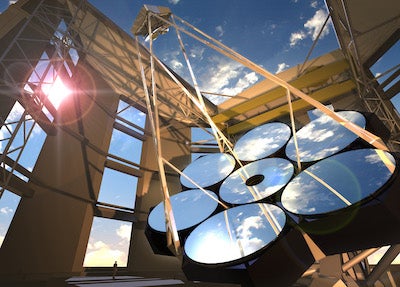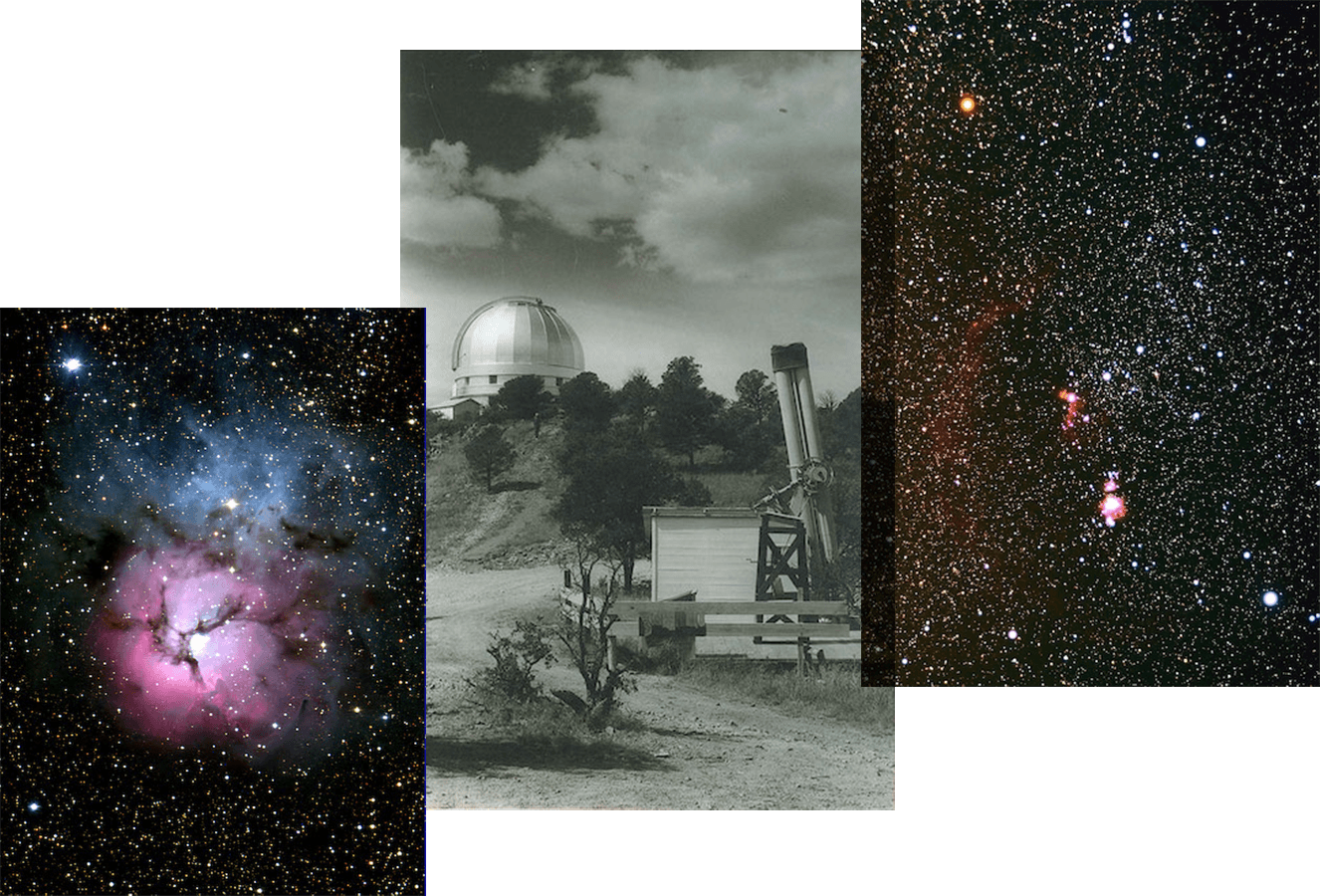Giant Leaps
A visionary gift
Before McDonald Observatory was one of the world’s leading centers for astronomical research and education, it was an idea. William Johnson McDonald, a banker from Paris, Texas, left most of his estate to The University of Texas at Austin to establish an observatory —nearly 40 years before UT would establish its Department of Astronomy. McDonald’s generosity and vision became the foundation for discoveries still being made a century after his lifetime, and his legacy continues to help attract talented space scientists to UT.
Apollo’s legacy
Buzz Aldrin placed the first Laser Ranging Retroreflector on the moon during the Apollo 11 mission and UT astronomers continued the experiment for four decades. McDonald scientists used laser beams aimed through telescopes to illuminate the reflectors, measuring the distance between the moon and Earth and helping us to better understand the moon’s orbit, the rotation of the Earth, and Einstein’s theory of relativity.

Next-generation knowledge
In May, Austin philanthropist David Booth committed a $10 million gift to support UT’s involvement with the Giant Magellan Telescope. Once completed, the GMT will be the world’s largest telescope, providing unprecedented views of the universe. As one of only 12 founding institutions worldwide, UT will be one of a few American universities that can offer its researchers, faculty and students access to a next-generation telescope for groundbreaking research. “I saw a rare opportunity to support a very exciting project that not only expands our view of the universe, but also pushes the boundaries of scientific discovery,” Booth says.
The future of space and Earth science
Understanding space starts with understanding Earth. Now under construction at the observatory is the McDonald Geodetic Observatory, a scientific facility devoted to geodesy, or the science of Earth’s shape, gravity and rotation. The MGO, part of a network of 30 sites for NASA’s Space Geodesy Project, will bring together scientists and engineers from UT’s Cockrell School of Engineering, Jackson School of Geosciences, Applied Research Laboratory and College of Natural Sciences to explore diverse interests including space research, global change and minimizing the impact of geohazards like earthquakes and sea-level changes.
Your place in the universe
Your gift to McDonald Observatory supports breakthrough discoveries about space— and life-changing science experiences for students across the country.
Learn more about becoming a Friend of McDonald or a member of McDonald’s Board of Visitors at mcdonaldobservatory.org/support.
Changing the world
More from this series
Every Voice Matters
The Blank Center is dedicated to ending the global stigmatization of stuttering.
The Future of Health
UT is creating a world-class academic health system poised to transform health care in Central Texas and far beyond.
Robotics Revolution
Visionary venture capitalist Bill Gurley — early investor in household names like Uber and Zillow — helps power a robotics revolution at UT.



